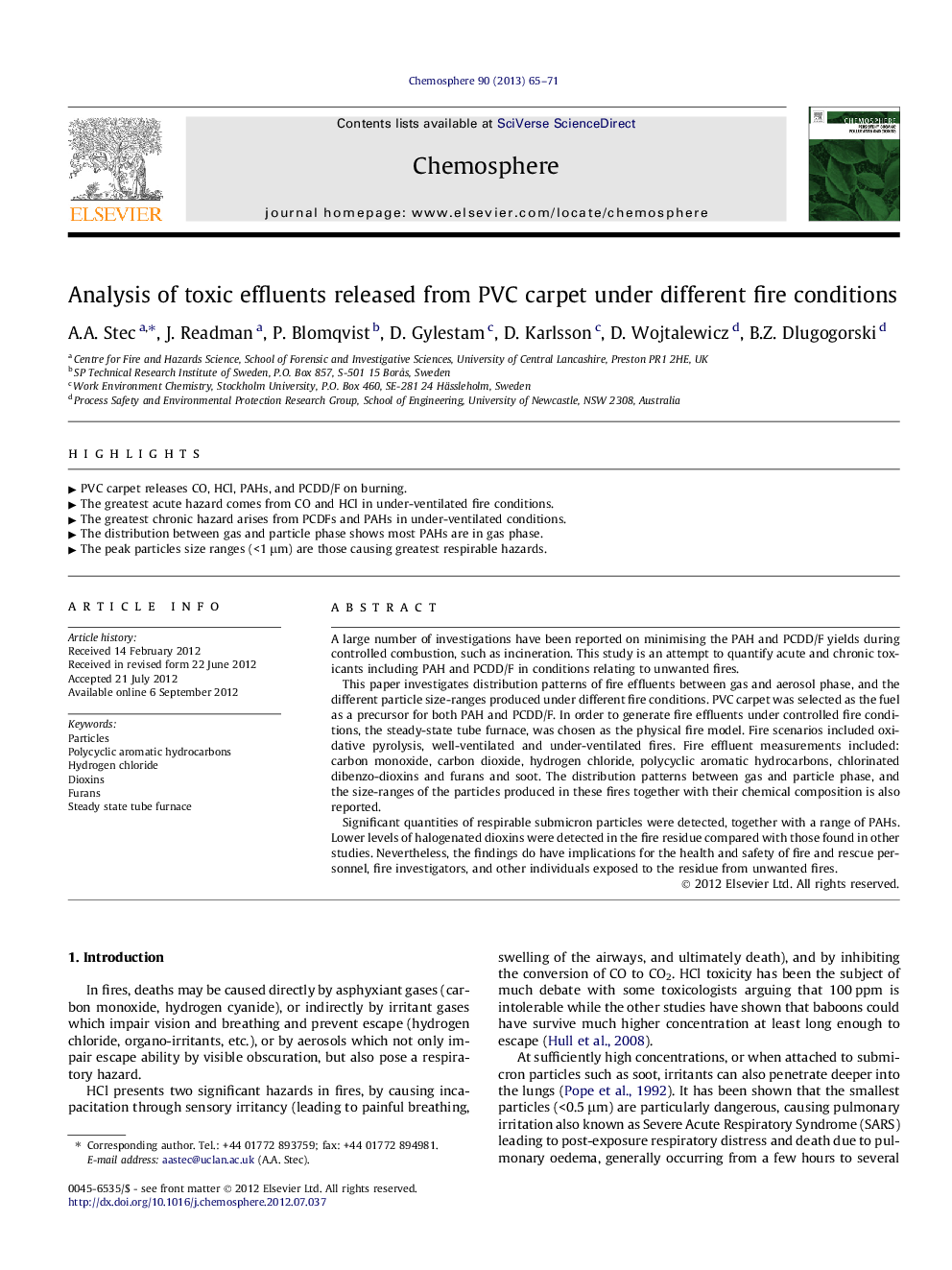| کد مقاله | کد نشریه | سال انتشار | مقاله انگلیسی | نسخه تمام متن |
|---|---|---|---|---|
| 4409775 | 1307508 | 2013 | 7 صفحه PDF | دانلود رایگان |

A large number of investigations have been reported on minimising the PAH and PCDD/F yields during controlled combustion, such as incineration. This study is an attempt to quantify acute and chronic toxicants including PAH and PCDD/F in conditions relating to unwanted fires.This paper investigates distribution patterns of fire effluents between gas and aerosol phase, and the different particle size-ranges produced under different fire conditions. PVC carpet was selected as the fuel as a precursor for both PAH and PCDD/F. In order to generate fire effluents under controlled fire conditions, the steady-state tube furnace, was chosen as the physical fire model. Fire scenarios included oxidative pyrolysis, well-ventilated and under-ventilated fires. Fire effluent measurements included: carbon monoxide, carbon dioxide, hydrogen chloride, polycyclic aromatic hydrocarbons, chlorinated dibenzo-dioxins and furans and soot. The distribution patterns between gas and particle phase, and the size-ranges of the particles produced in these fires together with their chemical composition is also reported.Significant quantities of respirable submicron particles were detected, together with a range of PAHs. Lower levels of halogenated dioxins were detected in the fire residue compared with those found in other studies. Nevertheless, the findings do have implications for the health and safety of fire and rescue personnel, fire investigators, and other individuals exposed to the residue from unwanted fires.
► PVC carpet releases CO, HCl, PAHs, and PCDD/F on burning.
► The greatest acute hazard comes from CO and HCl in under-ventilated fire conditions.
► The greatest chronic hazard arises from PCDFs and PAHs in under-ventilated conditions.
► The distribution between gas and particle phase shows most PAHs are in gas phase.
► The peak particles size ranges (<1 μm) are those causing greatest respirable hazards.
Journal: Chemosphere - Volume 90, Issue 1, January 2013, Pages 65–71